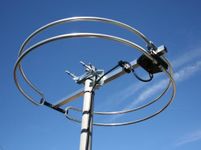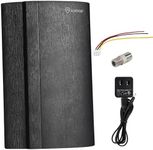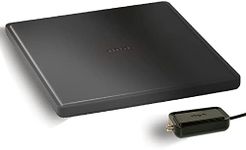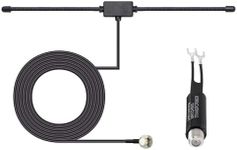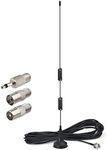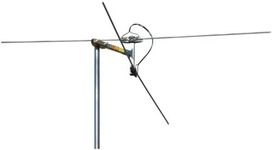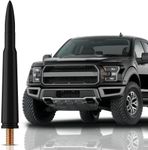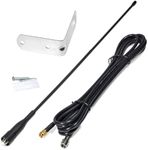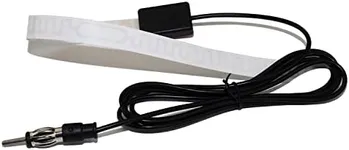Buying Guide for the Best Indoor Fm Antennas
Choosing the right indoor FM antenna can significantly improve your radio listening experience by enhancing signal reception and reducing static. When selecting an indoor FM antenna, it's important to consider several key specifications to ensure you get the best performance for your needs. Understanding these specifications will help you make an informed decision and find the perfect antenna for your setup.Antenna TypeThe type of antenna is crucial as it determines how well it can pick up signals. There are mainly two types: dipole and loop antennas. Dipole antennas are typically T-shaped and are good for general use, providing decent reception for most stations. Loop antennas, on the other hand, are circular and can be more effective in areas with weak signals or a lot of interference. If you live in an area with strong FM signals, a dipole antenna should suffice. However, if you are in a location with weak signals or a lot of interference, a loop antenna might be a better choice.
Frequency RangeThe frequency range of an FM antenna indicates the range of frequencies it can receive. FM radio operates in the range of 88 to 108 MHz. It's important to ensure that the antenna you choose covers this entire range to receive all available FM stations. Most indoor FM antennas are designed to cover this range, but it's always good to double-check. If you listen to stations at the lower or higher end of the FM band, make sure the antenna can effectively receive those frequencies.
GainGain refers to the antenna's ability to amplify the signal it receives. Higher gain means better signal reception, especially in areas with weak signals. Gain is measured in decibels (dB). For indoor FM antennas, a gain of around 3 to 5 dB is usually sufficient for most urban and suburban areas. If you are in a rural area with weak signals, you might want to look for an antenna with higher gain. Consider your location and the strength of the signals you typically receive when choosing the gain level.
Size and DesignThe size and design of the antenna can affect both its performance and how well it fits into your living space. Larger antennas generally provide better reception but may be more obtrusive. Smaller, more compact designs are easier to place and can blend in better with your home decor. If you have limited space or prefer a less noticeable antenna, look for a compact design. However, if you prioritize performance and have the space, a larger antenna might be the better option.
Ease of InstallationEase of installation is an important factor, especially if you are not very tech-savvy. Some antennas come with simple plug-and-play setups, while others might require more complex installation. Consider how comfortable you are with setting up electronic devices. If you prefer a hassle-free experience, look for antennas that are easy to install and come with clear instructions. Additionally, some antennas come with mounting options, which can be useful if you want to place the antenna in a specific location for better reception.
Cable LengthThe length of the cable that comes with the antenna can impact where you can place it. A longer cable gives you more flexibility in positioning the antenna for optimal reception. If you plan to place the antenna far from your radio or in a specific spot for better signal, make sure the cable is long enough to reach. Measure the distance from your radio to the desired antenna location before purchasing to ensure the cable length is sufficient.

